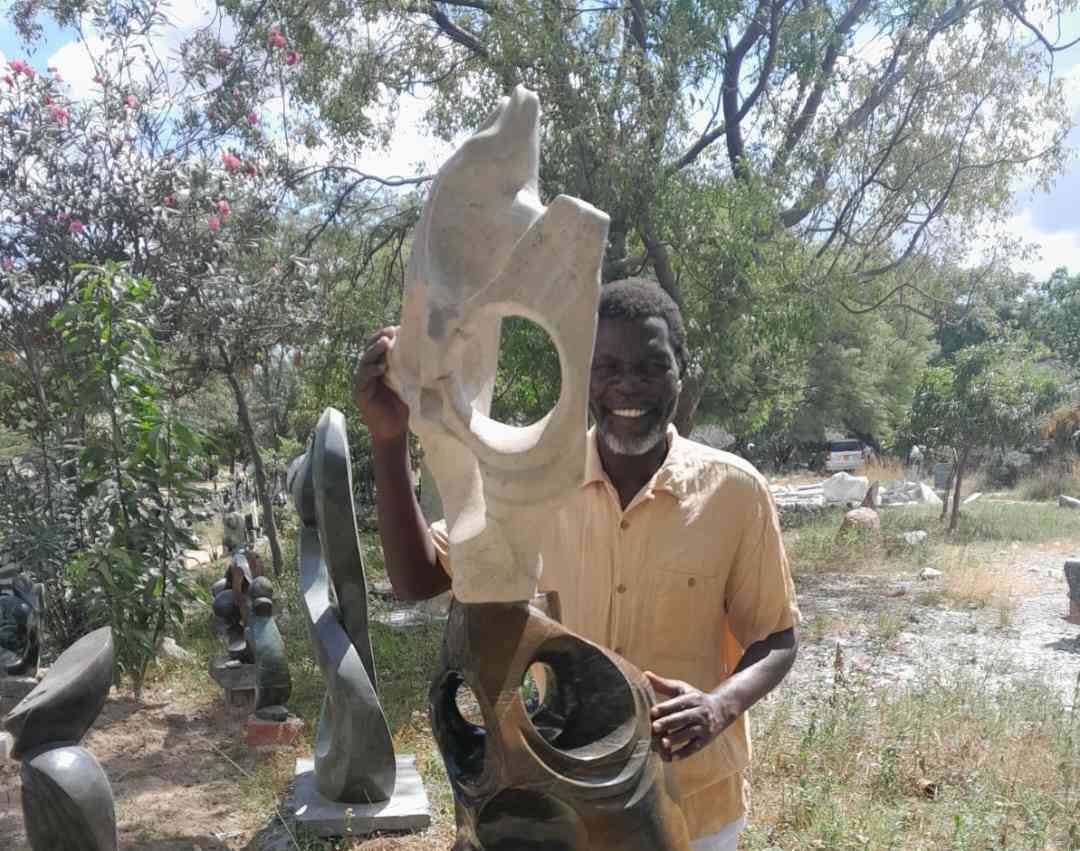
VISUAL artist Chemedu Jemali’s passion for upholding cultural values and nurturing his Shona and Ndebele traditionally-oriented creative work has earned him numerous tours to Germany and Netherlands, where he has conducted successful exhibitions and workshops.
Jemali defies odds by provoking people to tell their own stories and compile their own narratives through epic figurines and abstract creations on historic subjects.
He identified Mhondoro district in Zimbabwe as an area with several undocumented historical narratives and, as such, he is in what others may refer to as a toxic exercise as he tries to unravel untold truths about ethnic and racial origins identified with that area.
Jemali commenced his dream at the backyard of his lodgings and it was not easy for him to be accepted by the family as everyone sought to make quick buck and he had to compete with neighbours.
However, Jemali’s captivating abstracts in smooth finish white marble, fruit serpentine, opal, verdite, leopard rock and cobalt back then in the 1990s soon became the talk of Chitungwiza and charmed galleries and the hearts of cross-border traders and eventually he became a reputable visual art mentor and workshop facilitator.
“Mixed Spirit is a mixed art piece done on white marble and spring stones. The top part in marble is rotatable and each angle it takes in unison with its bottom spring stone which is almost a similar statuette provides a good narrator a chance to compose stories. Mixed Spirit also makes people see the genuineness of their culture.
“The story of Chimurenga has been badly distorted and this piece of work speaks volumes about my passion for freedom. There is no objective history, but the truth has to be known,” Jemali told NewsDay Life & Style.
Shona and Ndebele people have known high levels of hospitality and friendship, and Jemali tries to depict this in his creations.
- Symptoms of toxicity at workplaces
- The Fiddler: Your days are numbered
- The Fiddler: Your days are numbered
- Letter from America: We must rid ourselves of Eurocentriceducation. Which One?
Keep Reading
He also tries to unravel untold past events that today appear to be myths.
For instance, in his The Chiefs Family and Chiefs Daughters installations, he delves into the Sinyoro clan, whose origin is intriguing as their totem.
“The Chiefs Family and Chiefs Daughters monuments, respectively, are carvings that disentangle what has been the best kept secrets about the Sinyoros in Mhondoro, where a chief was betrayed by Portuguese colonial settlers who had asked for refuge at his homestead.
“A few days before they left for Mozambique, one of their teammates fell ill and failed to recover in time for departure. As a matter of fact, the Portuguese entourage left their colleague under the hospitable care of the chief and his daughters.
“The recovery from illness of the man who had been left behind was full of surprises and shocks as after a few months, three of the chief’s daughters confessed they had conceived.
“This accounts for the coloured Sinyoros we all see today,” he narrated.
Sinyoro is the bastardisation of the Portuguese word Senhor, meaning sir or mister.
Jemali’s parents were from Malawi and worked at a farm which was derogatorily called Chabwino near Shamva because at that time, it employed many Malawian migrants.
Chabwino is Chewa for “I am fine thanks” or “that is good for us”. It was only after high school that he came to settle in Seke, Chitungwiza, where unemployment was rife which made them turn to chipping stone.
“My work is highly unnatural and inattentive statuettes, ranging from spirit birds to schematised busts. I was inspired by my brother Chituwa who was very patient to coach me until I mastered carving such stones as verdite, springstone, cobalt and lemon opal,” Jemali said.
His stone art tells of many untold stories and he at times regrets that he has often put his artworks on the market without adequately telling the stories behind them.
The year 2002 still holds several fond memories for Jemali who conducted exhibitions in Germany (Rhauderfern, Schweinfurt, Stadhuishal Hengelo and Techlenburg).
He also unveiled his works at the Chiefs and Spirit Gallery in Den Haag, Netherlands, where he made history when he sold all his sculptures.
Since moving to Chitungwiza Arts Centre in May 2014, Jemali has developed a self-curated garden which is ideal for school tours and other excursions.






